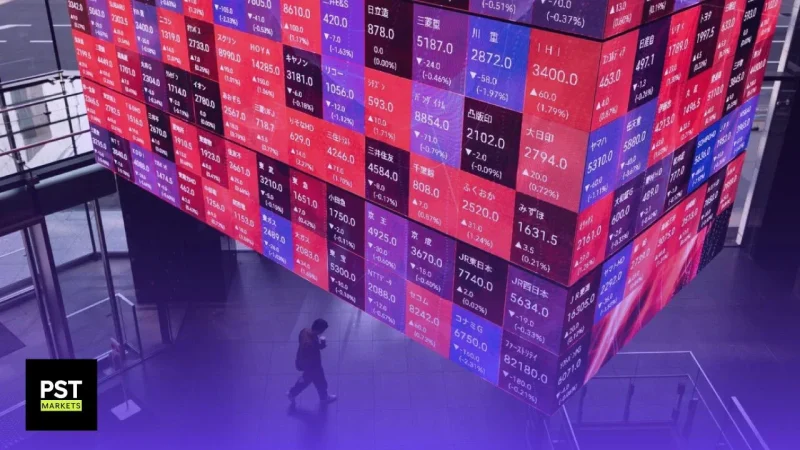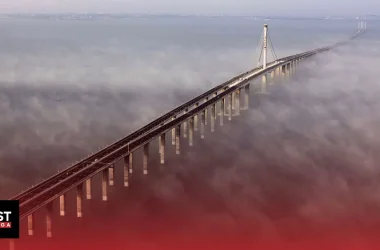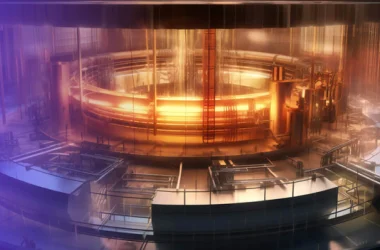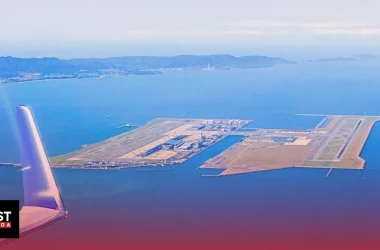Leading Wall Street firms have once again turned their attention to Japanese stocks, as the renowned Nikkei 225 index surpasses the 35,000 milestone, a feat that hasn’t been achieved in approximately 34 years.
Climbing to 37,963.97 points on February 13th, the Japanese index has seen a 16% increase YTD, while the S&P 500 is up roughly 9%. But, over the past 52 weeks, the Nikkei has surged 44%, to the surprise of many investors.
However, one particular investor wasn’t surprised. Warren Buffett started making bets on the Japanese stock market in 2020. But before going long on the Japanese stock market, there are a few things for you to consider.
History shows how easily the stock market can crash following an artificial boom, and Japan itself learned this lesson in the 1990s. Could this recent surge be an indication of a bubble preparing to one day burst? Even investors uninterested in overseas markets can learn from Nikkei’s past and how it could apply to rampant overvaluation in the US market.
Nikkei’s Recent Performance

According to JPMorgan strategists, the Nikkei’s remarkable performance can be attributed primarily to the weakening yen and the favorable risk-on sentiment prevailing in global stock markets following the Federal Reserve’s decision to pause interest rate hikes.
Growth in real wages was a significant catalyst during the initial six months of the year. This increase has triggered a revival in consumer sentiment, creating favorable conditions for companies to raise prices. As a result, there has been an improvement in profit margins and return on equity.
But this recent boom may bring back bad memories for some.
Japanese Stock Market Boom…
Consider the case of veteran Broker Hiroyuki Kikuchi. Kikuchi took over the family stock brokerage business in 1979 – just in time for Japan’s greatest market boom.
In 1989, he celebrated his brokerage’s 40th anniversary at a luxury hotel and hired a composer and band for more than $100,000 to create a ballad titled “Never Say Can’t.” A few months later, on December 29th, 1989, the Nikkei Stock Average closed at a record high of 38915.87. The country seemed on track to surpass the US as the world’s largest economy, and most of the world’s biggest companies at the time were based in Japan. Kikuchi, now 81 years old, remembers that everyone was “saying it would reach 50,000 or 60,000 next year.”
Companies were pouring money into stocks, sometimes earning more from the market than from their core business. Brokerages would offer a guaranteed return of as much as 7%, a promise they weren’t supposed to make but seemed harmless at the time. Meanwhile, Kyokuto Securities’ revenue grew more than 10-fold in the 1980s. As volume boomed, clerks worked late into the night handling the delivery of paper stock certificates. In Kabuto-cho, Tokyo’s Wall Street, taxis lined up past midnight.
What caused the Japanese stock market boom?
There was no one reason for the boom. Rather, it was a combination of multiple catalysts coming together at the right time to drive economic growth.
For example, quasi-free market corporate acumen justified PER multiples at fifty to seventy times earnings. Ultra-low interest rates and fiscal spending had fueled a liquidity-driven housing bubble, coupled with strong macroeconomic domestic demand.
Thanks to these policies, Japanese property company Mitsubishi Estate (OTC: MITEY) took control of Rockefeller Center in New York City in 1989. When Tokyo land prices peaked, Japan’s Imperial Palace grounds were more valuable than all the land in Florida.
Companies outside of the real estate sector were prospering too. Sony (NYSE: SONY) bought Columbia Pictures, one of Hollywood’s biggest studios, for $3.45 billion. Nintendo (OTC: NTDOY) and Toyota (NYSE: TM) were also flourishing.
…then Bust
In 1990, despite 6% total growth in the economy the year before and global confidence in Japan’s economic might, its progress suddenly came to a halt. In the first two years, the Nikkei nosedived, dropping 60% and losing $2 trillion in value.
Some Japanese companies from this period went on to achieve tremendous success like Sony, Nintendo, and Toyota – the world’s largest car manufacturer in terms of sales. However, many Japanese companies experienced a sharp decline, and remain a shell of what they once were in the golden age.
Nippon Telegraph and Telephone (OTCM: NTTYY) was once the world’s largest company. Its stock price remains 40% below its peak in 1987. Nippon Steel (TYO: 5401), which made headlines recently thanks to its acquisition of U.S. Steel, is still less than half its value in 1989.
Japan, until very recently, had been unable to recover completely from the shock. During the 1990s, Japan’s GDP averaged 1.3%. Then in the following decade deflation took root and Japan’s GDP growth averaged only 0.5% per year. Sustained slow growth continued right up until the global financial crisis and the Great Recession.
Why did the Nikkei Crash?
The Japanese stock market bubble was fueled by unrealistic speculation and valuations resulting from record-low interest rates. Seeing this unsustainable situation, the Bank of Japan raised interest rates.
But at that point, many borrowers were knee-deep in debt. When interest rates spiked, they were unable to pay off their debt – driving the market into a state of stagnation and debt crisis. As a result, a banking crisis crippled Japan leading to several government bailouts.
However this does not explain why the situation extended into years of constant decline or slow progression. One theory is that after the initial crash, people stopped investing out of fear. This caused a liquidity issue as people saved their money, leaving the market stagnating.
On the other hand, some analysts suggest that Japan’s monetary policy was too restrictive throughout the lost decades. They also blame the government for not accommodating the failing market with enough funding and bailouts. This may not be a fair asessment considering that the Japanese government engaged in repeated rounds of massive fiscal deficit spending and expansionary monetary policy without notable success.
Besides these two theories, many have pointed to demographic issues like Japan’s aging population and low population growth as playing a major role in the decline. The rise of the Chinese market and the emergence of global competition as had a negative impact on Japan’s economy.
Lessons to Be Learned
Nikkei’s crash in the 90’s serves as a stark reminder that investors shouldn’t jump too hastily on short-term growth. After all, this isn’t the only example. The 2008 recession also came on the heels of a flourishing stock market. These examples are still very relevant today.
Tremendous growth triggered by developments in AI add substantial value to the economy. After the explosive growth of a concentrated number of tech stocks with AI exposure, many have begun to wonder whether we are in an AI bubble. Compared to 2022, tech stocks performed far better in 2023 despite higher interest rates, suggesting that investors are factoring in much higher future growth rates.
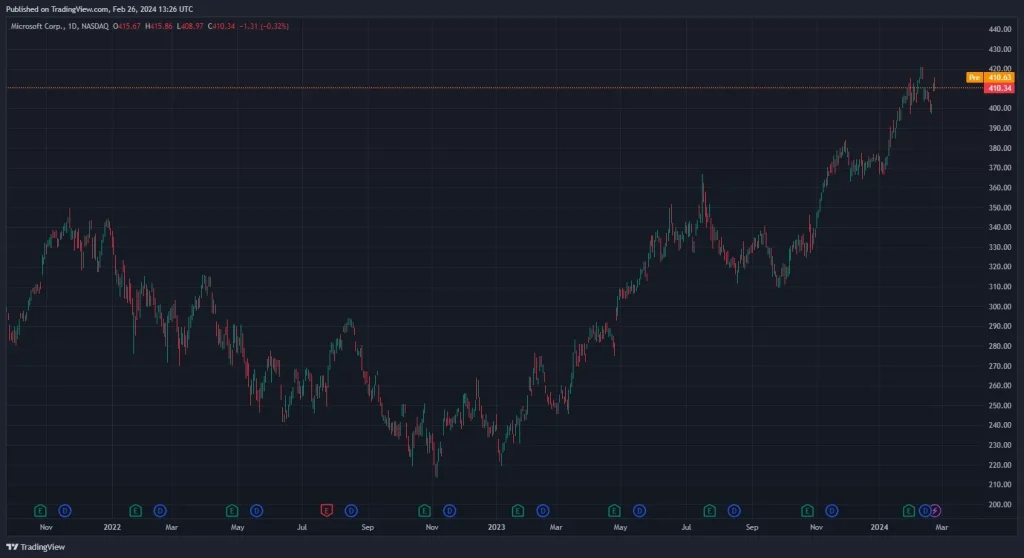
According to Goldman Sachs, the situation is still not nearly as bad as the tech bubble. For example, the seven biggest US companies leading the AI race have an average P/E of 25 – almost half the P/E of the biggest companies at the peak of the internet bubble. Besides this, these companies are already profitable and their cash as a percentage of market capitalization is double that of companies had during the internet bubble.
This tells us the situation is not as out of hand as that of the internet bubble. But it also doesn’t mean that a bubble won’t happen. A study of 51 major tech innovations from 1825 to 2000 found evidence of investment bubbles in 73% of the cases.
AI technology is still in its infancy, and it’s possible it won’t live up to investors’ expectations for some time. For example, Microsoft stock fell after its latest earnings report disappointed investors, even though the report was very positive and beat expectations. This may have been due to its guidance which was less than some analysts had expected.
While this could just as well have been a sell the news situation, it could also hint at investors’ expectations for over the top results or positive surprises. Others could be concered with the burden of AI investments on their balance sheets for the foreseeable future.
AI is very costly, as it requires gigantic data centers and immense computing power, on top of research and development. These costs combined with investors’ high expectations for AI leaders contributed to the AI market losing a total of $190 billion in the last earnings season.
Even though the AI industry is very promising, investors should not discount the risk of speculation getting out of control – leading to irrational valuations despite poor fundamentals. History shows that with the introduction of new technology, speculation builds and a bubble inflates before deflating. Still, this technology often re-emerges to drive growth through new innovations.
Disclaimer
Please visit and read our disclaimer here.





